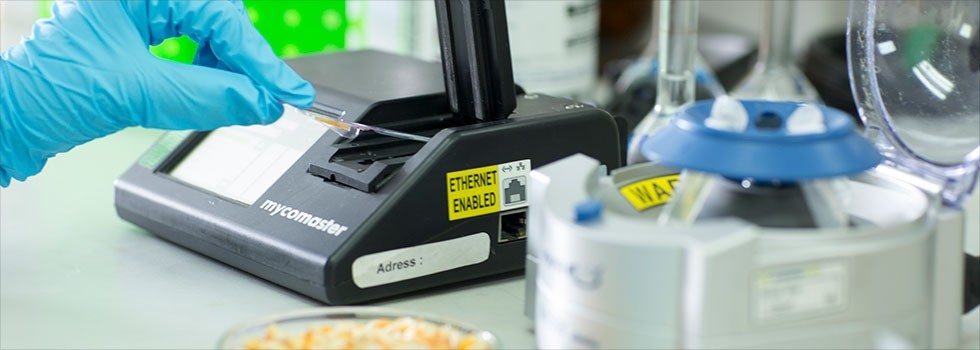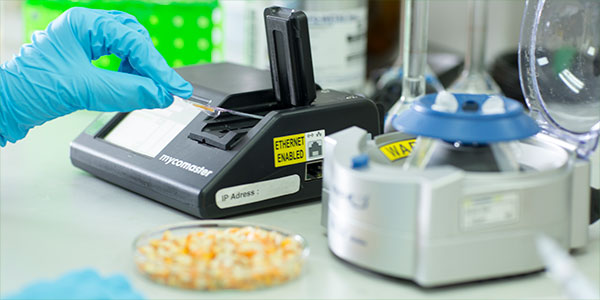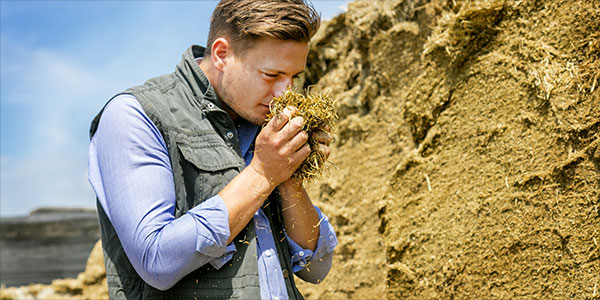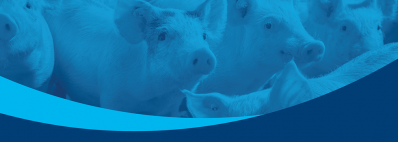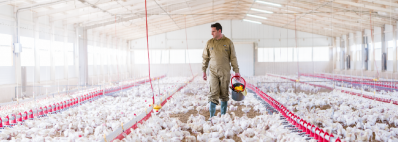Promotional Features
Tackling today’s feed challenges with new analysis methods
A nutritionist’s goal is to formulate a consistent diet that provides the essential nutrients for optimal health and performance of livestock animals. Proven and new feed analysis solutions help to formulate more accurate diets by providing actual nutritional values. Even outside the lab.
By Emmy Koeleman, freelance writer
Over the years, the portfolio of raw materials suitable to use for animal diets increased tremendously, which provides opportunities to formulate nutritious and - at the same time - cost effective and sustainable diets. In practice, it is already common to use every inch of the maize and soy plant (stalk and leaves) and include more by-products from the food and bio-ethanol industry and even new ingredients such as insect meal or algae. However, many of these ingredients have a fickle and variable nutritional (including fibre) profile, which can negatively impact nutrient utilisation and net energy values. Also, more extreme seasonal changes spur bigger varieties in quality of conventional raw materials. Assessing nutrient content and quality of feed ingredients in the animal feed sector is therefore more important than ever before, and this requires proven and accurate feed analysis methods.
More advanced testing
Feed analysis has been a common routine practice for feed mills, nutritionists and home mixers for years. You simply want to know the nutritional values of the feed ingredients before formulating a diet that meets the animal’s requirements for maintenance and performance. On top of that, you want to exclude unwanted contaminants in the product. But animal diets and farm goals are changing and the way we collect, interpret and hence use analytical feed data is evolving alongside. A common and proven method to test raw materials and complete feed is Near-infrared Spectroscopy (NIR), able to determine the nutritional components (e.g., fat, protein and moisture) of the sample in a quick and simple manner. There are different so-called "NIR calibration lines" in the market, developed for different kinds of nutrients in feed ingredients. More calibration lines are constantly added, based on market demands and the use of more and different types of feed ingredients. Think of NIR calibration lines for by-products of maize and other cereals (with or without stem or leaves, for example). And besides using NIR for the proximate analysis of the material, we are also able to measure reactive lysine, toasting quality and different fibre fractions. Something we couldn’t do before. Besides the proven NIR technology, new solutions have been developed over the years that provide the feed industry with more detailed information on feed quality, such as the presence of a variety of mycotoxins.
Caption: Testing of mycotoxins is needed because they are a major risk to animal health, milk quality and performance. Having accurate data on contamination levels can be used to monitor trends of raw materials per region and to adjust purchasing decisions of raw materials and feed by farmers and feed mills. Photo: Trouw Nutrition
Testing samples on the spot
Besides more advanced testing methods coming to the market, we also see another major shift in how feed analysis is done and where. Testing samples of complete feed or raw materials used to take place solely in commercial labs and the labs at feed mills. This is still the case, depending on the type or frequency of the analysis. However, a major breakthrough in feed analysis is that we don’t have to send every sample to an external lab anymore. Nowadays, we can test feed ingredients right at the feed mill or at farm level in a user-friendly and fast manner, based on NIR technologies or new analysis and scanning methods. This can save time and money and allows us to test the raw materials more frequently, hence having better control over feed quality. Some of these new types of on-site feed analysis solutions have become available in the last years. Some of these are part of NutriOpt. Developed by Trouw Nutrition, NutriOpt is a set of services and products around actionable analysis, actionable insights, optimal diets and optimal performance. Within the actionable analysis and insights pillars, NutriOpt offers several novel feed analysis methods (such as the NutriOpt On-site Adviser and Mycomaster) to apply in the field or on-farm. This allows farmers to scan feed and raw material samples any time, any place and receive results within seconds on their phone or desktop.
Look for value in each application
Now that feed analysis becomes easier and quicker, it also prompts to test more. More testing (and thus more data points) is beneficial in a sense that it creates a ‘trendline’ of data, which will give a better insight on the quality of the silage for example compared to one single test result from the lab. And this is valuable to farmers to confirm that – for example - the silage has a consistent quality over time. For feed mills, the amount of testing needed depends on the size or raw material purchasing policy. A comparative assessment could include that more samples are taken from a batch of grain, because it is sourced from a region with mycotoxins issues. Some feed mills buy large volumes per ship, and other feed mills buy smaller batches from different suppliers. Concerning the latter, we might need to test more often, and a mobile solution might be a good solution to do so. Bigger feed mills are often better helped with a desktop NIR solution. In feed analysis, there is simply no one-fits-all answer, and the right solution depends on several factors. It is key to find an optimum sampling frequency and the most practical way of doing sampling for each feed mill or farmer.
Caption: The looks, smell and feel of silage will give you some information on quality. But it doesn't tell you the exact nutritional profile. New mobile testing methods allow farmers to test feed (such as silage) on the spot and retrieve the nutritional information within minutes. Photo: Trouw Nutrition
The insights around feed data
Over the last years, feed analysis has taken huge steps forward in speed and things we can measure that we couldn't do before. Determination of nutritional details like reactive lysine, toasting quality and different fibre fractions are some of the recent innovations, combined with the ability to measure nutritional components of feed ingredients on the spot. Although feed analysis is of paramount importance, the true value lies in the application (whether it is a lab, desktop or mobile solution) and the translation of the analytical results to practice. This is why the first two steps of the NutriOpt approach: actionable analysis and actionable insights are closely linked to each other. Feed analysis only shows the nutritional data (for instance: 10% protein) or contamination levels (for instance: 1ppm of aflatoxins). But what do these numbers mean and which actions need to be taken? You need to have recommendations or insights around the data to decide if there is a change needed in formulation or management. This is where the work of a nutritionist and feed advisor begins. The human interpretation of the data and the results in the field (in the animal) are pivotal to confirm that the feed formulation on paper also works out in the field. Feed analysis is the first step. Adding nutritional information and advice to the analytical results is where the difference can be made. Working with proven and advanced feed analysis methods gives nutritionists more control over the formulated diets and predictability of the results.
